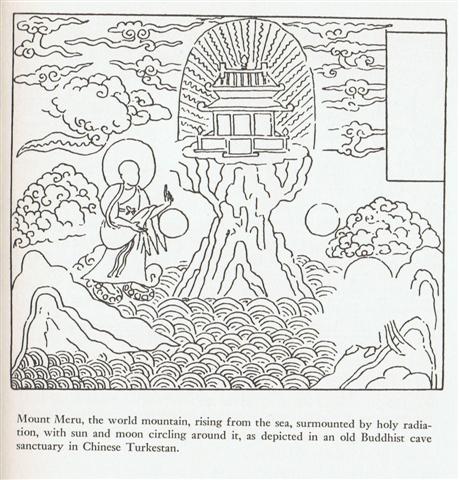Inserting information about the planets shows that Sun is positioned as number 1 on the 'back side':
Moon has a 'wilting' maro with 3 'feathers' and Mars it is who is being 'swallowed' in Ha7-35. If vaha kai identifies which 'garment' of the Sun (or the Moon) is being 'swallowed', then the reversed vaha kai in Yb3-2 should represent how Jupiter (Father Light) is on his way to be reborn:
Similarly, it should be Venus reborn as morning star in Yc1-3:
While in Gb5-10 Venus as evening star is being swallowed:
Beyond vaha kai at *Ha7-35 comes Mercury, which is quite in order because he is a planet so close to the sun that he maybe only can be seen while crossing in front of the face of the sun. He will then look dark and therefore be the proper planet for the time when Sun has left us beyond high summer. The Turkestan view of cosmos depicts Mercury close below Sun with a broad light band across, the opposite of the next - extremely bright - planet (Venus):
The broad sun band of Mercury agrees with the broad haga rave 'band' in *Ha7-36:
The bottom third of the Turkestan picture (below the upper area inside which small circles without added signs are spread about) we should probably read as 'the watery region of the sky', the time of 'the Flood'. Another Turkestan picture (also from Hamlet's Mill) supports my suggestion:
Arguments from Chinese Turkestan may seem farfetched, but I have reason for believing there is a close agreement between their world view and what we can read in the rongorongo texts. |
||||||||||||||||||||||||||||||||||||||||||||||||||||||||||||||||||||||||||||||||||||












